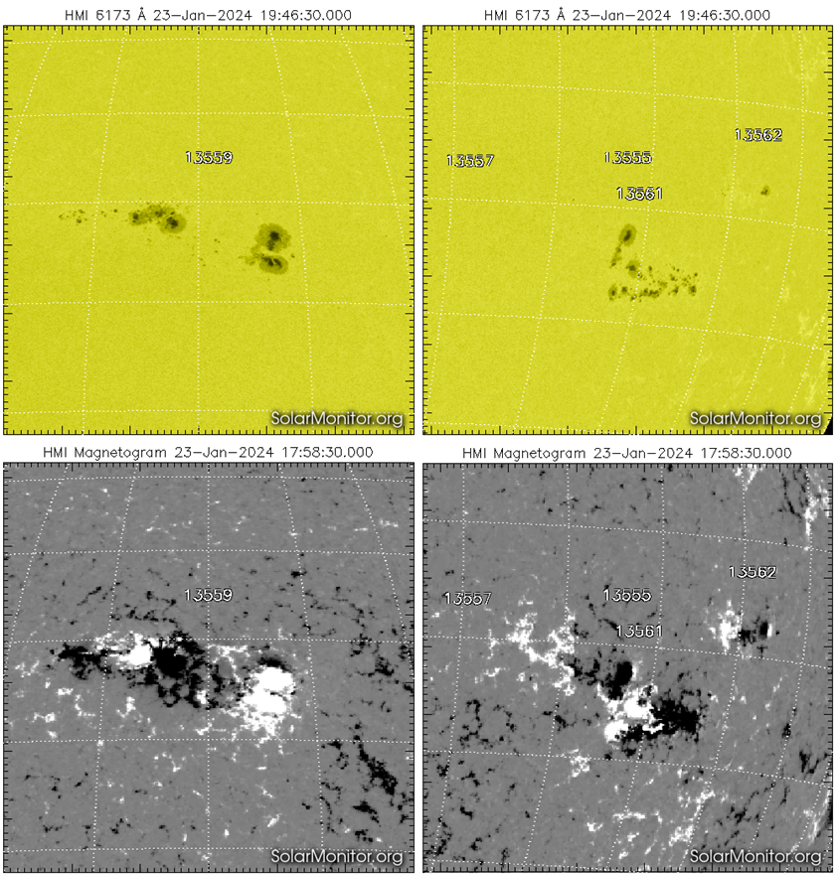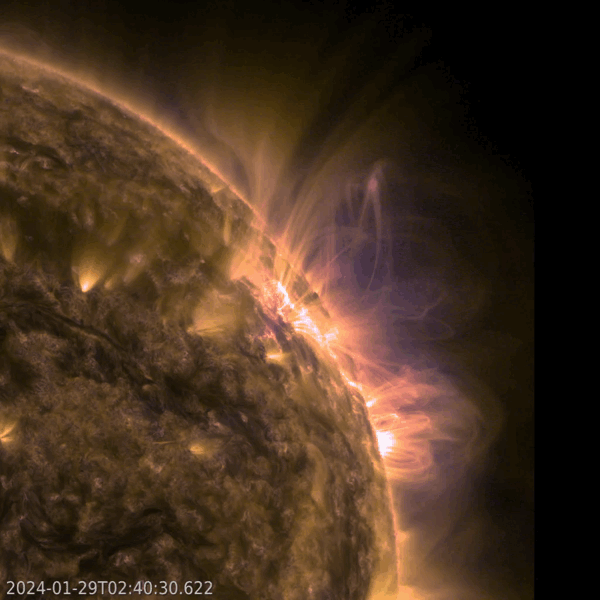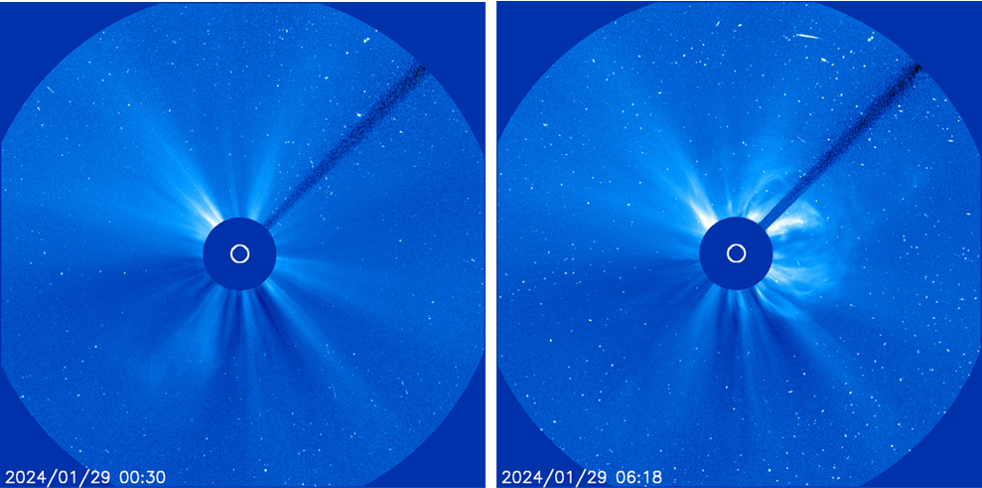Two active regions dominated the solar activity last week. Initially all eyes were on NOAA 3559 following its production of a strong M5.1 flare on 23 January (see the newsitem). Fairly quickly, the sunspot group became quiet and a new region in the southern solar hemisphere took over. NOAA 3561 emerged near and to the southwest of quiet active region NOAA 3555. It produced a total of 14 M-class flares on 22-24 January. They were mostly located over its central portion which consisted of a heap of small, opposite polarity sunspots. White light images and magnetograms of both regions are shown underneath.

Flaring activity in both sunspot regions contributed to a total of 8 M-class flares on 23 January. That's a lot for a single day, but is not unusual, even for this solar cycle. A total of 12 M-class flares were recorded on 14 December 2022, and 8 M-class events were also recorded on e.g. 20 May and 1 August 2023. NOAA 3561 outperformed NOAA 3559 in the production of M-class events (14 to 6), but NOAA 3559 produced the most intense ones with the aforementioned M5.1 flare on 23 January, and a long duration M6.8 flare on 29 January. The latter event is shown underneath combining AIA 171 (yellow; temperatures around 700,000 degrees) and AIA 131 (blue-reddish; multi-million degrees) from SDO. The clip shows the prominent post-eruption coronal loops topped by very hot plasma from the reconnection site. The brief interruption in the clip is from an eclipse of the Sun by the Earth as seen from SDO's circular, geosynchronous orbit at an altitude of 35,789 km (inclined at 28.5 degrees). This orbit was chosen for continuous 24/7 communications with the fixed ground station, and to reduce the duration of solar eclipses to only about an hour a day for a few weeks a year.

Associated with the M6 flare was a moderate proton event with a maximum of 137 pfu (particle flux units) that was reached at 18:05 UTC, as well as a partial halo coronal mass ejection (CME). SOHO's coronagraphic imagery reveals that the bulk of this CME is directed away from Earth, but a glancing blow cannot be excluded and is forecasted to reach Earth on 31 January, with little geomagnetic effects expected. The images underneath show the coronagraphic view a few hours before and after the M6 flare. Note in the post-eruption image not only the CME, but also the increased noise from the impact of the energetic particles on the camera pixels.






